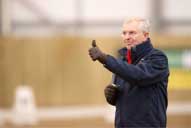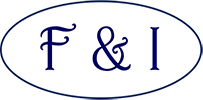F & I Association Annual Course Dressage Training with Christoph Hess
 Over the last few days we have all been privileged spending time gleaning the experience of world class coach, Christoph Hess at our F&I Association annual course.
Over the last few days we have all been privileged spending time gleaning the experience of world class coach, Christoph Hess at our F&I Association annual course.
Christoph’s charismatic and friendly personality instantly put riders at ease on the first day. He asked to watch the riders work their horses alone as though they would do at home or just before they were to do a competition.
Whilst the riders worked their horses Christoph engaged with his audience, discussing the way the horse was going and what a judge may be looking for at the level the horse may be competing, he actively relished our thoughts in the feedback.
Discussions between Christoph carried on throughout all sessions, where he would engage us all again and actively involved the rider, asking them to express what they were feeling, their horses level of training and what they wanted to gain from working with Christoph.
The training then begins……Christoph had already quickly and accurately assessed both strengths and weaknesses in horses and riders (and within their training). Precision and attention to detail and the basics then hold center stage.
It became quite evident that Christoph takes every opportunity to promote a horse friendly system of training and emphasizes over and over again that we should work with the horse.
“Dressage is used to promote the mental and physical well-being of the horse and should be logical. Dressage should promote a happy horse: This is our highest goal — a happy horse, a happy athlete.”
Emphasis over the two days was the same for every horse and rider. This being the horse had to move freely forwards, with rhythm, relaxation and balance, with particular attention to the tempo. The rider had to be in a balanced position with a soft and absorbing seat and correct application of their aids.
“Rhythm has to include ‘tempo’ – you can ride the whole time too fast or too slow. The paces have to be active but not hurried and show enough swing in the back, the back is the bridge between the hind legs and the front legs. The better the tempo, the more elasticity the horse will show in the paces”.
Correct use of the riders inside leg to outside hand was extremely important and most of the work was based on shoulder in position. This was very evident when working on pirouettes in walk and canter where most riders felt the need to put the horse into a travers position first, instead, Christoph wanted shoulder in position, meaning the horses inside hind leg took the weight and particularly kept the rhythm, which could not happen if the quarters were pushed into the pirouette rather than the shoulders leading the movement. This theme was taken through to the half pass and used for straightening the horse.
“One of the first things in riding is to get the horse to accept the inside leg. The rider’s inside leg makes the horse, it governs speed and straightness, but it only works in conjunction with a proper outside rein, and in conjunction with the rider’s outside leg, that leg should be five to ten centimeters back- no more.”
Virtually every horse and rider at all levels Christoph took back to basics…. trot, canter, trot transitions on a circle, correct use of the riders inside leg
“Riders use the spur instead of the calf of the leg. This is wrong. As trainers and judges, we need to encourage putting the horse in front of the leg, NOT the spur.”
To promote free forward movement from the horse and encouraging the horse to use its own inside hind leg more effectively, relaxing and stretching onto the contact.
“Contact is about stretching through the whole body. Is the movement starting behind, swinging over the back and to the horse’s mouth? The rider has to feel the horse’s hind legs in his little finger”
Over the two days, Christoph underpinned (brilliantly) the scales of training below.
“The goal of dressage is to have a horse in harmony and in front of you. This is wonderful communication, the horse trusts the rider, both horse and rider are relaxed, positive and forward. Dressage is not doing movement, movement, movement because they are in the Rule Book, it is making the horse obedient, making the horse supple, making the horse in front of you. The happy athlete.”
I was privileged to have been asked to write this report. The highlighted, italic areas are quotes that Christoph frequently said in his training sessions.
I had a wonderful two days and cannot wait for next year.
A big thank you to Christoph for sharing his experience and wisdom with us all.
Report written by Debbie Follett BHSI

